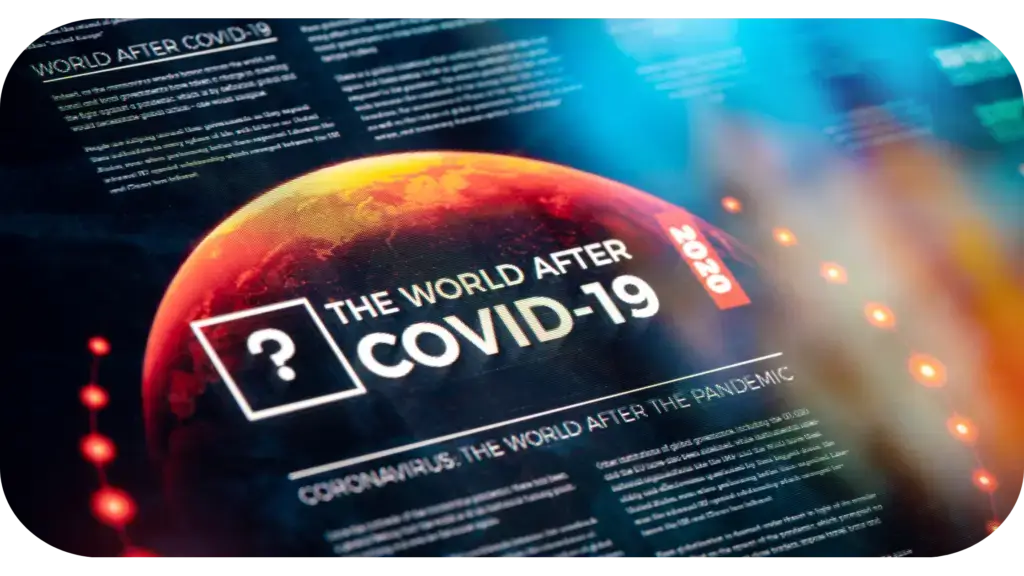We are all currently riding the COVID-19 wave. For some nations, it’s a tsunami while for others, it’s a mere ripple in a pond and yet for others, COVID-19 is just but a rumor. The wave will come and go but one thing is certain, all nations, all businesses, all organizations will be impacted. The difference will be either positive or negative.
In this article, I will address ordinary or typical organizations. The ones that have brick and mortar premises, the ones that have employees who gather at the premises to manufacture products or deliver services. They have customers who walk in through their doors or products are delivered to them. These organizations are designed to deliver to customers’ demands and expectations.
Addressing Organization Design, post COVID-19
The dictionary definition of Organization design is “an organized group of people with a particular purpose, such as a business or government department”.
Amy Kates and Jay Galbraith in their book Designing Your Organization (2007) define organization design as
“the deliberate process of configuring structures, processes, reward systems, and people practice creating an effective organization capable of achieving the business strategy”.
Strategy Definition

Currently, organizations define their strategies based on their purpose and an environment that has generally been within their control, unless the usual dynamics including the market, shift; Until COVID- 19.
Prior to this unprecedented entry, annual plans had targets and numbers, and resources were allocated to deliver on the same. The health sector suppliers no doubt had their projections for the year, probably stretched as is typical of any organization, but the stretch has been doubled or quadrupled. Online retail companies are also dealing with super stretched demand. On the downside, some organizations’ plans have simply vanished as they have had to shut down.
What Happens Next?
When the wave is over, organizations will have to deal with how they are designed. For those with positive results, it will be a time to reflect on how they rode the wave with results that they have not had before, a great windfall. Unless another wave happens, windfall results may not be achieved ever again. For the businesses that either shut down, scaled down their operations, and learned virtual operations or scaled up the same, it will be a turning point.
All these businesses will require to redesign their organizations based on experience and lessons learned during this period.
The Star model is one way of designing organizations. The model typically consists of strategy, structure, processes, rewards and people practices. Capabilities and Culture are additional pillars that are used in organization design. Below is Jay Galbraith’s organization design model that stipulates the five key pillars.

-
Strategy
Strategy and strategic decisions will need to be evaluated to determine what has changed during this season and the way forward. Business targets must be redefined based on the new realities. Customer and consumer need no doubt have shifted during this period. Route to market and distribution models have been disrupted. The Supply chain will require a fresh approach considering the current experience.
A review of the business strategy will and should inform the other pillars of organization design.
-
Capabilities
Organization capabilities are what differentiate one organization from the next and provide a link between the strategy and organization requirements necessary to deliver the strategy
There will be needed to review what has changed; competition, consumer trends, technology, business delivery, the market, etc. and what the organization needs to do better than the competition as well as gain that edge as quickly as possible.
-
Structure
Post COVID-19 organization structure will be informed by the new environment, the revised strategy and overall purpose of the organization. Structure addresses authority levels and decision-making flows as well as roles within the organization, and essentially the number of people required by the business. Due to the impact of COVID-19 on business, a most likely decision by leadership will be to declare redundancies as a quick way of containing costs., That’s the easy route but not necessarily the correct one, never mind that it does attract litigation attention.
Every structure decision taken needs to be informed by the revised strategy.
-
Business Processes
Workflows and decision making between roles and functions will have been interrupted. Virtual meetings are the order of the day and business travel has ended. Decision making has probably also changed or entirely stopped for businesses that have shut down. In the new environment, a review of management processes and how work is managed will be critical.
-
Reward and Metrics
A big debate is currently ongoing. Businesses are not productive and the very source of money to pay basic salaries is redundant. Leave without pay and pay cuts are the present number one agenda items for some businesses. Pay and compensation philosophies will no doubt change. Should we have permanent and pensionable jobs? What happens to bonus policies and guaranteed pay. Variable pay and commission-based pay that are based on production right now are dead or have changed may, and the employees who have depended on this have no income at all.
Performance-based pay is impacted and will require a complete overhaul.
It will also require an evaluation of how the organization measures success as well as the metrics used for the same.
-
People Practices
Prior to the onset of COVID- 19, many organizations have had people strategies and practices that have governed how the human capital in the organization is defined and managed. These practices define the talent profiles necessary for the organization as a source of competitive edge, where to get them and how to retain them.
For organizations that did not have remote working, telecommuting, flexi hour policies, clear business continuity plans, the sudden change and drastic demands of the new environment must be overwhelming. There is no policy in most organizations that addresses how to deal with a pandemic and most business continuity plans, where they exist, deal with everything else except a pandemic. Some organizations have no succession plans in place and they suddenly must fill positions created by the sudden upsurge of business or sadly the loss of employees who succumb to the illness.
Post COVID- 19, it will be necessary to review the human capital strategies and practices, first in line with the revised strategies and to include the effects of the unknown.
The profile of the talent for the businesses will need to be those that can fit in with the new reality. How employees are developed must change going forward to accommodate the new environment.
This might be the time to throw out that HR policy manual and create a new way of life and new employee experience.
-
Culture
A critical pillar to the model and upon which all the rest lie is organizational culture. I want to stick to the common definition of culture, “the way we do things around here”. The phrase indicates ongoing practices and norms that organizations adopt or develop over time. Culture is Leader-led. The definition denotes how leaders lead in ordinary times, but these are no ordinary times. Emotional intelligence becomes a key competence for leaders at a time such as this. Leaders who are used to a script of leadership that they have developed over time suddenly have no script at hand and must make decisions on the go and lead people who need answers that they (leaders) themselves do not have. It takes a mature leader who has a human heart and mind to lead during this season, not the results-driven individual.
Adapt to Survive
The Post COVID -19 situation calls for a different organizational construct in very many ways. Organizations that will survive going forward are those that will adapt with pace to the new environment – Charles Darwin’s phrase comes to reality now more than ever – it is the fittest of the organizations that will survive, those that regenerate and adapt to the new normal.
A redesign of the organization will be a good place to start.

